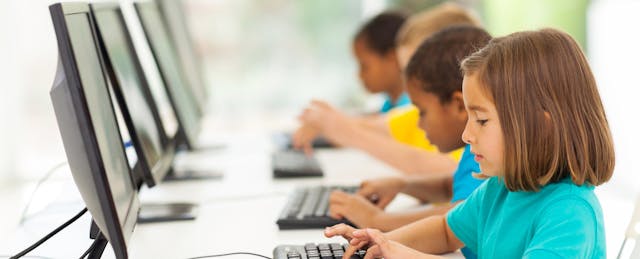Personalized learning is being heralded as an antidote for much that ails the education system. It is deemed by some as a way to inspire and motivate students, tailor instruction to meet student needs, and scale instruction with the support of technology. Many schools nationwide are exploring ways to personalize the learning experience. But a fundamental question to ask early in the journey to personalize education for students is: What are we actually personalizing for?
Traditional instructional methods can fail to reach students who are living in poverty, have a variety of memory or processing differences, or have significant emotional needs. Indeed, traditional methods can also fail those students considered to be traditional learners. Some may be underachieving, experiencing boredom or frustration, or masking their difficulties with learning.
While personalization holds promise, to be successful it is essential to understand the whole child, not just their cognitive strengths and challenges, but the development of their social and emotional competencies and their backgrounds as well. Effective and personalized experience is not created in isolation chambers of students sitting in cubicles in front of computers. Instead, a culture of personalization is built on embracing each learner, understanding who they are, keeping expectations high, and providing paths for success with and without technology.
Defining Learner Variability
Welcoming all learners means understanding and accepting their differences and uniqueness and this is core to the concept of learner variability. Variability applies to students who are obviously struggling and those who seem to be thriving. It is the idea that all students are unique in how they learn.
The Digital Promise report, Learner Variability is the Rule, Not the Exception, cites research that suggests how learner variability describes each student who enters the classroom, bringing with them a unique constellation of abilities and experiences that matter when it comes to learning. A 360° film shows what learner variability looks like in a classroom.
For example, if a student comes to class and is exhausted and doesn’t remember the assignment, it helps to know if it’s because they are responsible for younger siblings while their single mom works two jobs to earn enough to feed everyone. Or, that it’s a challenge for that student to get organized and out of the house, indicating she might be in need of deeper supports for executive functioning. Chastising the inattentiveness or tardiness may, in the short term, change the behavior. But designing a classroom with supports—writing assignments on the board as a visual aid or providing brief instruction steps to review assigned work—aids their memory, ensuring that each learner is given what they need to meet their potential.
Why Learner Variability Matters For Personalized Learning
If a teacher understands learner variability and the whole-child, then when they open the door to their classroom at the beginning of the school year, they will see a design challenge more than a group of students with different problems. Learner variability can be understood through a learner model framework that outlines what matters for learning within specific domains. Four categories of factors are suggested as influencers of learner variability:
- Content: Content Factors describe building blocks in a domain (say reading or math) that are developing during the targeted age range. These component skills are expected to improve over time and contribute to the learner's overall achievement. Examples: literacy (decoding, foundational writing skills, vocabulary) and math (symbolic number, arithmetic fact retrieval and mathematical flexibility).
- Cognition: Cognitive Factors are abilities that allow students to control, manage, and store their thoughts, knowledge, and behaviors/actions. Examples include: attention, cognitive flexibility and working memory.
- Social and Emotional Learning: SEL factors are those which capture the social world of the learner and their motivations to learn. Examples include: emotion, motivation and stereotype threat.
- Student Background: Student Background factors describe both individual and larger societal and contextual factors that affect learning. Examples include: home learning environment, sleep and socioeconomic status.
Delving into what research has found about these factors gives teachers and learning designers insights for supporting students. Evidence-based strategies can be used to apply research findings in order to address unique student challenges.
Circling back to the question: What are we personalizing for? We are personalizing to address the variability in each learner, to help each student understand and meet their potential in school and beyond. The learning sciences research, if accessible and understandable, can support the work of educators and product developers to appropriately use technology to scale, understand the full diversity of learners, and help maintain high expectations for all. These are the guardrails for personalizing learning to ensure each student achieves to their fullest potential.



